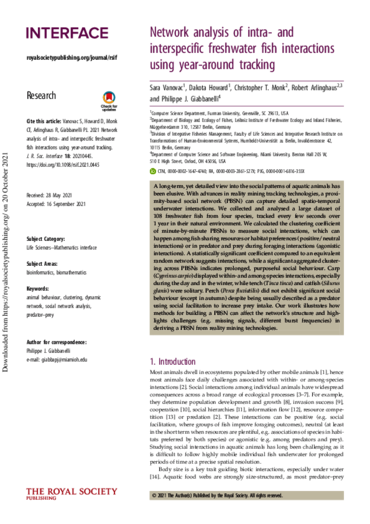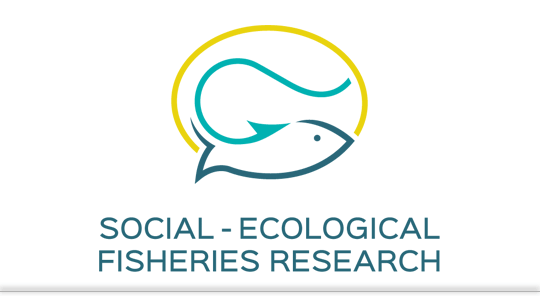A long-term, yet detailed view into the social patterns of aquatic animals has been elusive. With advances in reality mining tracking technologies, a proximity-based social network (PBSN) can capture detailed spatio-temporal underwater interactions. We collected and analysed a large dataset of 108 freshwater fish from four species, tracked every few seconds over 1 year in their natural environment. We calculated the clustering coefficient of minute-by-minute PBSNs to measure social interactions, which can happen among fish sharing resources or habitat preferences (positive/neutral interactions) or in predator and prey during foraging interactions (agonistic interactions). A statistically significant coefficient compared to an equivalent random network suggests interactions, while a significant aggregated clustering across PBSNs indicates prolonged, purposeful social behaviour. Carp (Cyprinus carpio) displayed within- and among-species interactions, especially during the day and in the winter, while tench (Tinca tinca) and catfish (Silurus glanis) were solitary. Perch (Perca fluviatilis) did not exhibit significant social behaviour (except in autumn) despite being usually described as a predator using social facilitation to increase prey intake. Our work illustrates how methods for building a PBSN can affect the network’s structure and highlights challenges (e.g. missing signals, different burst frequencies) in deriving a PBSN from reality mining technologies.
Network analysis of intra- and interspecific freshwater fish interactions using year-around tracking
Peer-reviewed

Vanovac, S., Howard, D., Monk, C.T., Arlinghaus, R., Giabbanelli, P.J. 2021. Network analysis of intra- and interspecific freshwater fish interactions using year-around tracking. Journal of the Royal Society Interface, 18, 202110445.
Published
: 2021
Appeared in
: Journal of the Royal Society Interface, 18, 202110445
